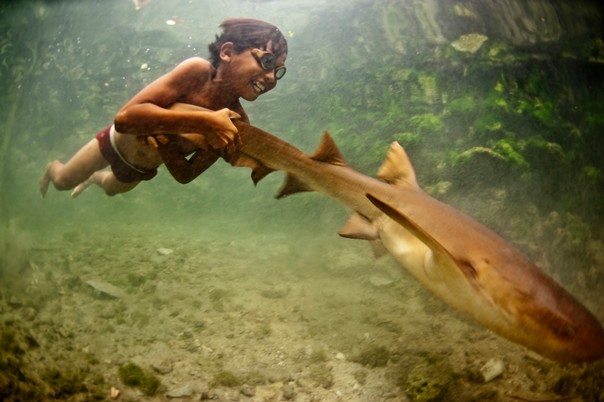-


The Moken ‘sea gypsies’ of the Andaman Sea have developed the unique ability to focus under water, in order to dive for food on the sea floor. Their sight is 50% more acute than Europeans'.©James Morgan/Survival International
-


The Moken's oral history is rich in knowledge of the sea, winds and lunar cycles.
One legend tells of the la-boon, or 'the wave that eats people'. The story has it that just before the la-boon arrives, the sea recedes.
When the waves receded prior to the Asian tsunami of 2004, the elders of a Moken village in Thailand recognized the signs and led their community and tourists safely to higher ground.©Cat Vinton
-


In the rainforests of Borneo, Penan men hunt wild boar with blowpipes made from hardwood and darts laced with tajem, a poison extracted from the milky latex of a tree.
The poison interferes with the functioning of the animal's heart.©Victor Barro/Survival International
-


Reindeer meat is the most important part of the Nenets' diet.
It is eaten raw, frozen or boiled, together with the blood of a freshly slaughtered reindeer, which is rich in vitamins.
The fat content of reindeer milk is 22%; six times as much as that of a cow.©Steve Morgan
-


The Hadza have developed a mutually helpful relationship with the honeyguide bird, which leads them to wild bees' hives.
The bird calls to the hunters, who whistle back to it. It flits from tree to tree, stopping to wait for hunters to catch up, so eventually leading them to a hive, often high in the boughs of a baobab tree.©Joanna Eede/Survival International
-


A Bushman woman in Botswana chews the flesh of a melon for its moisture.
Traditionally, the Bushmen find water in ‘pans’ – rain-filled depressions in the sand - and from plants such as tsamma melons and roots, techniques learned over thousands of years of surviving in the desert during the dry seasons, when the water-holes of the Kalahari sand-face turn to dust.
“You learn what the land tells you,” says Gana Bushman Roy Sesana.©Dominick Tyler/Survival International
































